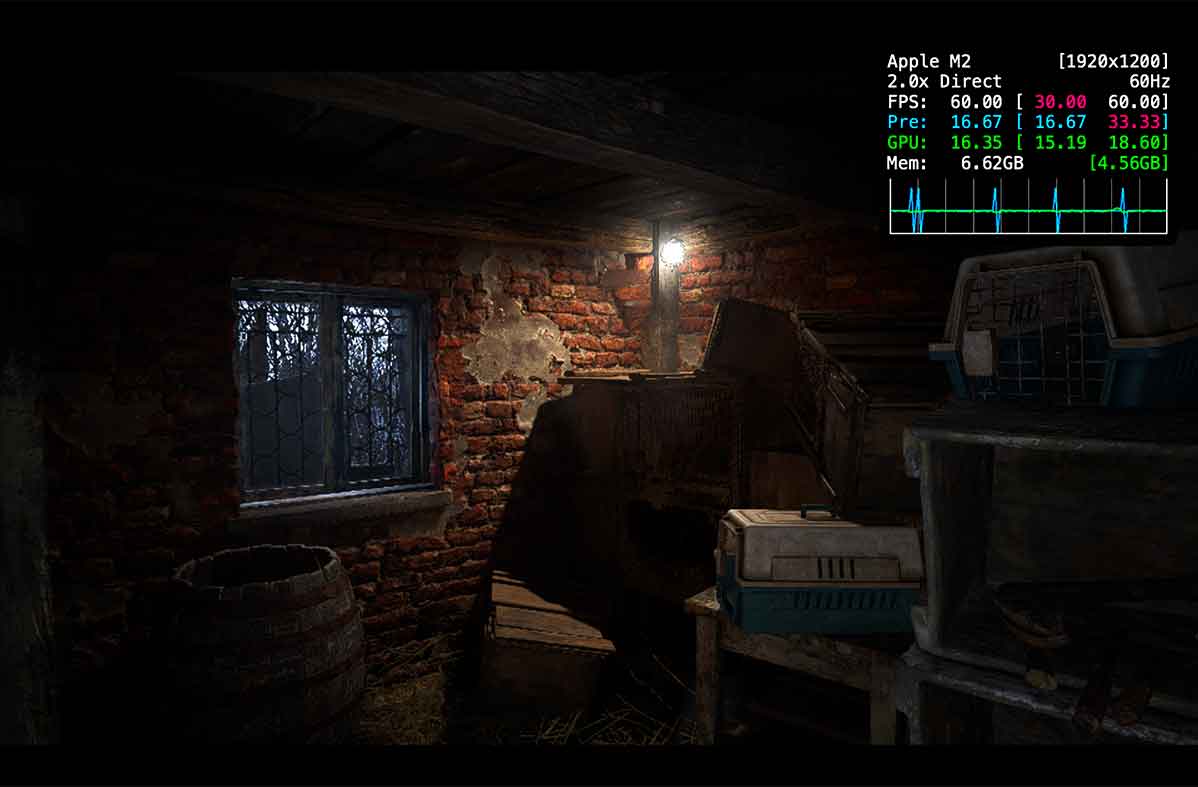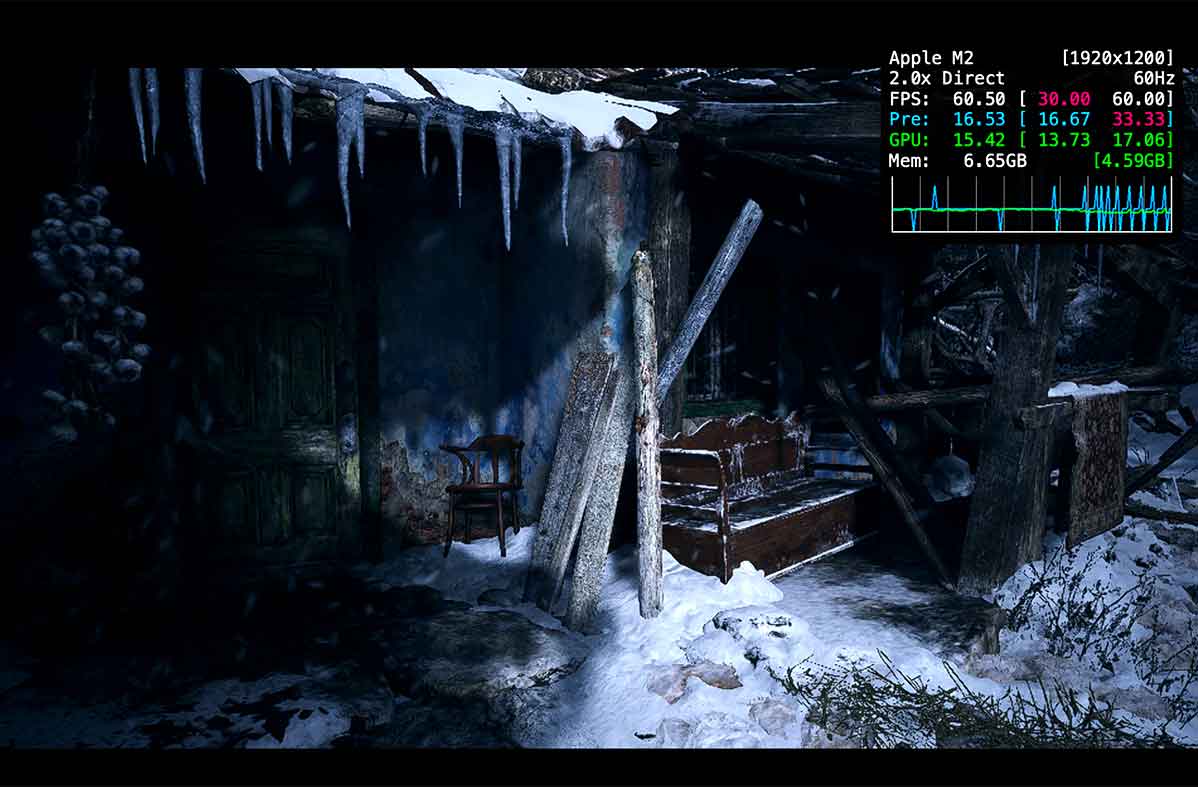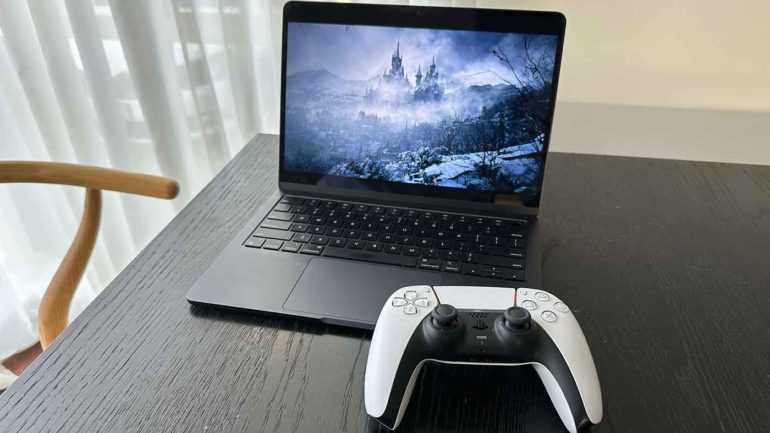I’ve always been a Mac user since my early high-school years, and whilst I have zero regrets in this when it comes to productivity or the creative career path that I chose, gaming has often been a sore spot, particularly in the PS3/360 era of gaming, where a lot of the cult indie games still weren’t finding their way to consoles, instead relying on a PC audience.
Whilst Apple has made progress in the gaming space, both in the way of mobiles games on iPhone/iPad and through the recent introduction on Apple Arcade, which has some genuinely fantastic games and is a great introduction for younger games and more casual audiences alike, Resident Evil Village dropping on Apple Silicons devices recently had my very intrigued.

A bit of backstory for those that haven’t been following the Mac scene closely. At the end of 2020, Apple began transitioning away from Intel chips to its own Apple Silicon chips, which has just been a game-changer in terms of performance and battery life across the entire Mac range, and that’s obviously that transfers to the gaming space as well.
If you don’t have a mouse and keyboard handy, any PlayStation, Xbox or Nintendo Switch controller can easily be paired with a Mac (or iPhone/iPad for that matter) to quickly get started gaming.
Booting up Resident Evil Village on an M2 MacBook Air was a pretty surreal experience if I’m being honest. It’s important to remember that whilst Village isn’t the most visually taxing game, this is a computer that is barely thicker than an iPhone and has no fans, relying on passive cooling to regulate its temperature.

Running the game at 1080p, I was able to get roughly 30FPS upon booting, but that was without MetalFX upscaling, which is Apple’s own answer to DLSS (see my RTX 4080 review for how much of a fan of that I am). This instantly took the performance to 60FPS in quality mode at the balanced graphics setting, and made playing Resident Evil Village an incredibly smooth experience.
This sometimes dropped down to the 45-55 mark when coming across enemies, but for the most part, it just felt really impressive to be playing a recently released AAA game that was primarily designed for next-gen consoles on a MacBook Air.
There was definitely a little bit of a drop in visual fidelity, and a few odd quirks in the distance with MetalFX upscaling turned on, but nothing that impacted the gameplay experience at all, and if a MacBook Air was the only computing device that you owned, and you wanted to play this game, it’s a great experience.
One of the main reasons I’ve always wanted gaming on Apple products to be a more common occurrence is because the displays in Apple products and level of calibration are second to none. This feels more important than ever when every game has HDR, and honestly, I can never seem to be happy with how that’s setup when it comes to gaming on gaming monitors (or even TVs for that matter).

Booting the game on a MacBook Pro 14-inch for a brief amount of time, I was able to crank the game up to a 1440p resolution and push the frame rate up well above 100 to the 120 mark. This was perfect with the 14-inch MacBook Pro’s ProMotion 120Hz display which can also hit 1600 nits of peak brightness in HDR.
Aside from No Man’s Sky coming to Apple Silicon Macs in the near future, the future of AAA gaming does still feel a little bit hopeless in terms of it being your primary device. But with Apple clearly investing in this space in the way of Metal3 and MetalFX upscaling, and a more closed off ecosystem in the entire line of Macs having Apple Silicon, it does feel like the time is now for more AAA games to come to Macs.
I’m more than convinced that these devices are capable of handling it, but it’ll be up to developers and publishers whether they deem it to be a viable place for their games to live.



